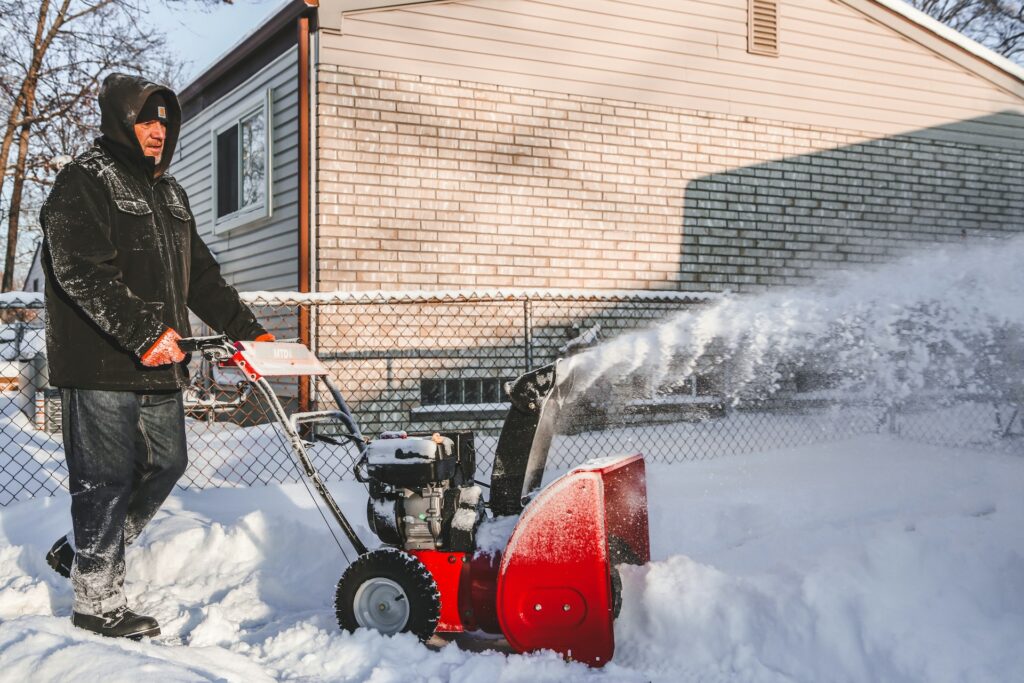Post Preview
Table of Contents:
- Introduction to Snow Management Challenges.
- Key Elements of an Effective Snow Removal Plan.
- Establishing Clear Priorities.
- Efficient Snow Removal Methods.
- Selecting the Right Snow Removal Equipment.
- Importance of Early Season Preparations.
- Legal Considerations and Tenant Communication.
- Engaging a Professional Snow Removal Service.
- Sustainability Practices in Snow Removal.
- Case Studies and Real-Life Examples
Introduction to Snow Management Challenges
Winter can transform even the most well-kept apartment complex into a logistical nightmare. Snow and ice present significant safety risks, complicating quick passage from parking lots to apartments and turning daily routines into a series of cautious movements. Being proactive against such challenges is essential for the safety of residents and the peace of mind of property managers. Snow buildup can lead to slip-and-fall accidents, vehicle collisions, and emergency vehicle obstructions without a plan.
A well-defined apartment complex snow removal policy helps mitigate these risks by outlining responsibilities, scheduling timely removals, and ensuring that walkways, parking areas, and entry points remain clear. Property managers can set a foundation for effective snow management to safeguard against these potential hazards and ensure a seamless living experience for their residents.
Key Elements of an Effective Snow Removal Plan
Establishing clear priorities is essential for any snow management plan. Areas such as entryways, walkways, parking lots, and emergency routes should be at the top of the priority list. Implementing a logical sequence for snow removal tasks helps streamline efforts, ensuring that the most critical areas are accessible and safe in a timely manner. As highlighted in FacilitiesNet, developing a well-structured snow and ice removal plan is crucial for maintaining safety and efficiency during winter weather.
Establishing Clear Priorities
Defining priorities is fundamental in any snow removal plan. Property managers should assess critical areas, including entryways, walkways, parking lots, driveways, and emergency routes. These high-traffic zones should receive immediate attention to prevent hazardous conditions and ensure the smooth movement of pedestrians and vehicles.
A well-organized removal sequence enhances efficiency. Snow management teams can systematically ensure safe access by clearing main thoroughfares before tackling secondary paths. Additionally, planning for snow storage areas where excess snow can be safely relocated without obstructing essential pathways or creating drainage issues is crucial.
Efficient Snow Removal Methods
Selecting the proper method for snow removal depends on factors such as the property’s size, the frequency of snowfall, and the severity of winter weather. Smaller properties often rely on manual methods, such as shoveling and snow blowers, while larger complexes benefit from mechanized solutions like snow plows and industrial snow throwers. A balanced approach that incorporates various techniques can optimize the removal process.
For instance, using snow blowers for sidewalks while deploying plows for larger driveways and parking areas can ensure precision and efficiency. Proactive de-icing measures, such as spreading salt or brine solutions, can help prevent ice accumulation and facilitate easier removal. As highlighted by This Old House, understanding the best practices for managing snow and ice can make winter maintenance more effective and less labor-intensive.
Selecting the Right Snow Removal Equipment
The success of a snow removal plan largely relies on the tools employed. The appropriate tools can accelerate the process, enhance efficiency, and reduce labor demands. Smaller residential properties may require essential tools like shovels and snow blowers, whereas commercial spaces and larger apartment complexes often necessitate heavy-duty equipment, including:
- Snow Plows: Ideal for clearing large surface areas quickly.
- Salt Spreaders: Help prevent ice formation and enhance traction.
- Snow Blowers: Effective for pathways, driveways, and sidewalks.
- Vacuum Snow Collectors: These are useful for handling heavy snowfall in urban settings.
Investing in sturdy and dependable equipment ensures durability and reduces maintenance expenses. Consistent upkeep and prompt equipment servicing can avert mechanical breakdowns, which can be expensive and interfere during significant snowfall periods.
Importance of Early Season Preparations
Preparation before the winter season is key to avoiding last-minute challenges and ensuring the safety and accessibility of a property. Property managers must adopt a proactive stance for winter preparedness by executing these crucial actions:
-
Inspect and Service Equipment
All snow removal equipment, including plows, snow blowers, and salt spreaders, should be inspected and serviced well in advance of the first snowfall. This guarantees that all equipment functions correctly and reduces the likelihood of failures during essential times. Regular upkeep, including monitoring fluid levels, replacing worn components, and assessing performance, can prevent expensive fixes and interruptions.
-
Stock Up on Essential Supplies
Adequate de-icing materials such as salt, sand, and environmentally friendly alternatives should be procured beforehand. Equipment fuel reserves should be assessed and replenished to avoid shortages during peak snow events. Maintaining a sufficient stock of ice melt products can avert dangerous situations and minimize liability risks.
-
Develop a Comprehensive Snow Management Plan
A site-specific snow removal strategy should be created to address key areas of concern. This plan should identify high-traffic zones, areas prone to ice buildup, and locations with poor drainage. It should also outline designated snow piling locations to prevent obstructions and ensure safe passage for pedestrians and vehicles.
-
Train Staff on Best Practices
Snow and ice management employees should be trained in efficient and safe removal techniques. This includes proper equipment handling, practical application of de-icing materials, and adherence to safety protocols to prevent accidents. Conducting refresher training sessions before winter can reinforce procedures and improve response times.
-
Establish a Communication Plan
Clear communication protocols should be in place to coordinate efforts during snow events. Property managers should establish contact with snow removal contractors and have an emergency response plan in case of severe weather. Tenants, residents, and employees should also be informed about snow removal procedures and any changes to access routes.
Property managers can mitigate risks, enhance safety, and streamline operations when winter storms arrive by taking these proactive measures. Proper planning minimizes disruptions, protects property assets, and ensures a seamless winter season.
Legal Considerations and Tenant Communication
Staying compliant with local snow removal regulations is critical to property management. Municipal laws may require snow removal within a specified time frame after a snowfall. Not following these regulations may lead to fines or liability claims if accidents occur. Communication with tenants and residents is equally vital. Providing clear guidelines about:
- Snow removal schedules
- Designated pathways and cleared routes
- Safety precautions during snowstorms
Keeping residents informed through email notifications, social media updates, or signage can foster cooperation and enhance overall safety during the winter months.
Engaging a Professional Snow Removal Service
Engaging professional snow removal services can be a dependable and economical choice for spacious properties. A dedicated snow removal company has specialized equipment, trained personnel, and experience handling severe winter conditions.
When selecting a snow removal service, consider the following:
- Experience and reputation: Seek businesses with a demonstrated history of success.
- Response time: Ensure they can act promptly during snow emergencies.
- Contract terms: Understand service fees, coverage areas, and contingencies for extreme weather conditions.
Hiring professionals allows property managers to focus on other responsibilities while ensuring timely and effective snow management.
Sustainability Practices in Snow Removal
With growing environmental concerns, adopting eco-friendly snow removal practices is becoming increasingly important. Some sustainable approaches include:
-
Using Environmentally Safe De-Icing Agents:
Traditional rock salt and chemical de-icers can contribute to environmental damage, contaminating waterways and harming aquatic life. Switching to eco-friendly alternatives such as calcium magnesium acetate (CMA), beet juice mixtures, or sand can effectively manage ice while minimizing pollution. These options decompose more safely in the environment and decrease the likelihood of harmful runoff into adjacent lakes, rivers, and groundwater. Additionally, proper application techniques, such as pre-treating roads and sidewalks, can enhance efficiency and reduce the amount of de-icing material needed.
-
Minimizing Salt Usage to Prevent Soil and Water Contamination
Excessive salt application not only corrodes infrastructure and vehicles but also disrupts soil composition, affecting plant health and local ecosystems. Municipalities and businesses can implement precise spreading techniques, such as calibrated spreaders and brine solutions, to reduce overall salt use while maintaining safety. Public education on responsible salt application for homeowners and property managers can also reduce unnecessary environmental impact.
-
Implementing Permeable Surfaces to Enhance Natural Drainage and Reduce Ice Buildup
Permeable pavement, such as porous asphalt, permeable concrete, and interlocking pavers, allows water to drain through the surface rather than accumulating and freezing. This reduces the need for de-icing agents while preventing ice buildup that can lead to slips and falls. By facilitating natural water infiltration, these surfaces help replenish groundwater supplies and mitigate urban flooding, providing a long-term, sustainable approach to winter maintenance.
Adopting these environmentally friendly practices ensures safer winter conditions and helps protect ecosystems, water quality, and public infrastructure.
Case Studies and Real-Life Examples
Learning from real-world examples can provide valuable insights into effective snow removal strategies. Some successful approaches include:
- Leveraging technology: Some apartment complexes use weather forecasting apps and GPS tracking for plows to improve response time and efficiency.
- Optimized plowing routes: Using geographic data to create optimal plow paths can reduce fuel consumption and labor costs.
- Community engagement: Some residential areas involve tenants in snow-clearing efforts through incentive programs, fostering a sense of shared responsibility.
By examining these best practices, property managers can refine their strategies and enhance snow removal operations, ultimately ensuring safer and more accessible environments during the winter season.



